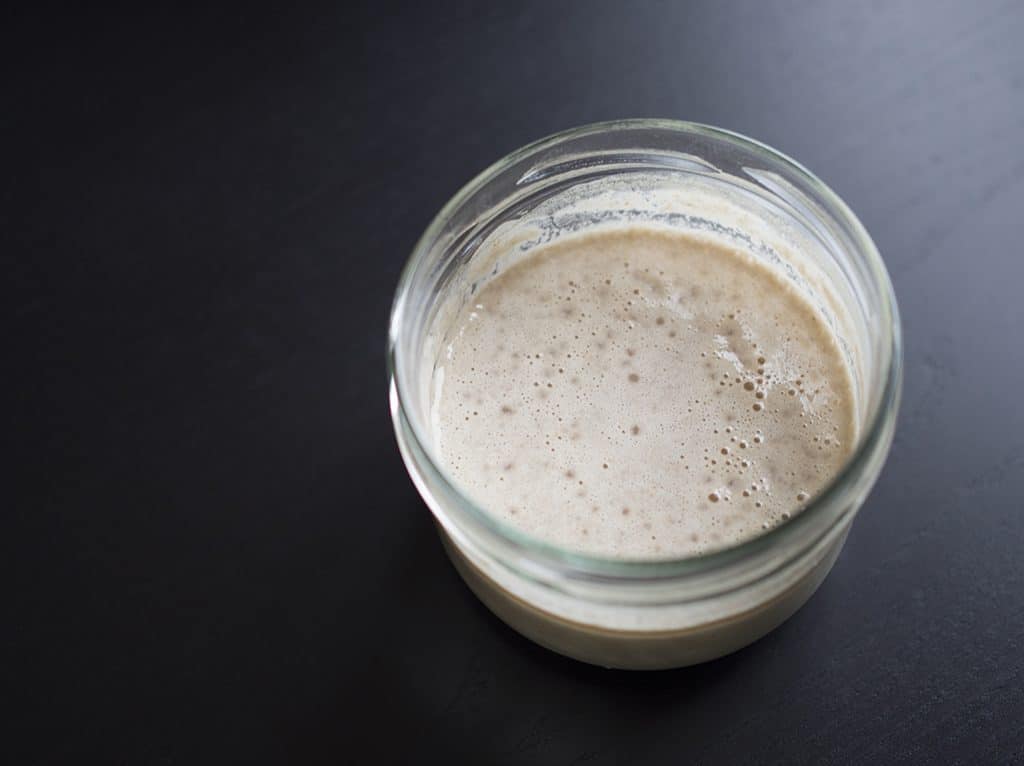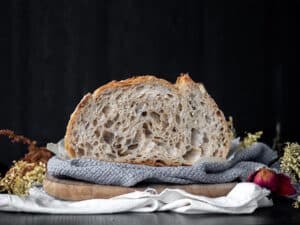A huge favourite with creative craft bakers, sourdough may often appear complicated when making home-made bread. And yet, the principle of sourdough is a simple one and making sourdough-based bread is a fascinating exercise.
A brief history of sourdough
Sourdough has been used around the world for centuries and has contributed towards creating a large variety of bread types with highly distinctive tastes and textures. Using sourdough was, for a long time, the only way to get the bread to rise; a secret that was discovered, according to different versions, by the Babylonians or the Hebrews. However, the most frequently cited example is that of Egypt: rumour has it that a baker left behind a batch of unbaked cereal dough, which under the effect of fermentation, began to rise, thus giving rise to the first leavened loaf.
What is sourdough used for?
The purpose of sourdough is to ensure that the dough rises. Sourdough is a living substance. The spontaneous fermentation taking place allows a simple flour and water dough to start fermenting thanks to the ferments naturally present in the flour and surrounding air. These ferments are micro-organisms: yeast and bacteria develop to form the key agents in the fermentation and production of acidity and aromas
Methods for producing a sourdough
Each sourdough behaves differently due to various factors: the amount of water used, the temperature and humidity of the room, the amount and type of flour.
Principle: In order to develop and produce the distinctive aromas and acidity typical of sourdough, the microorganisms must feed on the nutrients present in flour, namely sugars, minerals and vitamins.
Sourdough making: After a few days, during which water and flour have been added regularly according to the “refresher” principle, the sourdough doubles in volume, and the first signs of fermentation appear, namely the visible formation of little bubbles on the surface and a noticeable, slightly sour, acidic smell. After about 7 to 10 days, the sourdough triples in volume and can at last be used for the production of bread. This is referred to as a ready-to-use sourdough “mother” or “starter”.
Benefits and constraints of sourdough
Advantages and benefits of sourdough
Sourdough-based bread is identifiable, among other things, by its thick crust, dense crumb and sour flavour.
Apart from influencing taste, sourdough also impacts upon:
- crumb texture(which is generally firmer)
- the shelf-life of the finished product: by naturally preventing contamination by mould and bacteria and by delaying the staling of the loaf,
- the nutritional density of the finished product: a denser crumb, which is richer in soluble fibres reduces the glycaemic index of the dough for example, a key factor for those needing to cut back on their sugar intake,
- feeling of satiety:sourdough-based bread promotes feelings of satiety by slowing and improving intestinal transit, an effect of the organic acids and soluble fibres it contains,
- the bioavailability of mineralscontained in bread, mainly magnesium and calcium, by making them more readily absorbable by the organism.
Many studies are currently underway to help us understand and master the functionalities of sourdough and also find new applications for developing health, attractive, tasty bakery goods.
Constraints of using sourdough and Lesaffre’s solutions
In the case of spontaneous sourdough (involving the development of ferments naturally present in flour), handling this flora requires major organisational constraints, careful observation and patience. When the appropriate implementation conditions are not fulfilled, there can be a change in balance in the sourdough, resulting in huge variations in aroma, flavour and therefore taste of the finished bakery good.
In order to counteract the risks of variability in the use of sourdough and thus obtain the well-loved aromatic typicality sought after by bakers for their sourdough-based goods, Lesaffre has devised a series of solutions adapted to the recipes and processes and taking account of the requirements laid down in the production workshops. The group therefore proposes starters, devitalised sourdough, ready-to-use live liquid sourdough, sourdough-based preparations :
Sourdough Starter
Starters are used to obtain sourdoughs having the desired characteristics for breadmaking thanks to a carefully chosen selection of species and strains (usually a combination of yeast and bacteria). They are used to produce a sourdough within 24 hours, ready to incorporate into the recipe in the same proportions as a spontaneous sourdough.
Live active sourdough
Live, ready-to-use sourdoughs enable bakers to get straight into the sourdough preparation phase without the need for refreshers.
Sourdough-based preparations
Sourdough-based preparations, enhanced with malt, organic acids, spices, etc, help to extend and modulate the palette of aromatic notes typifying the array of bakery goods. When directly added to the mix, they lend a unique colour and taste to the finished product.





